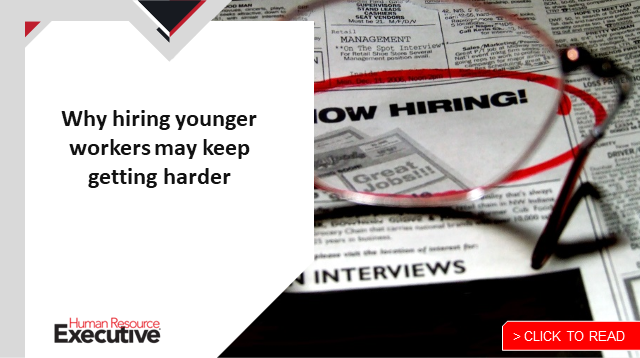Is there such a thing as “The New Normal?” We’ve all been through years of tumultuous change—from a global pandemic that forced most professionals to forgo the office for the kitchen table, a reckoning on racial justice issues that brought DE&I to the forefront and now a looming economic downturn—so it’s time for talent acquisition professionals to push the reset button and look toward what 2023 will bring.
Scenario planning for an economic downturn
Most economists agree that 2023 will see some degree of an economic slowdown, but opinions differ as to whether it will devolve into a full recession. However, this uncertainty shouldn’t prevent talent acquisition teams from preparing—and learning from their mistakes. The Great Recession of 2008-2009 saw many employers drastically cutting their workforces just to stay afloat. This meant the remaining employees had to pick up the slack, leaving them stressed and burned out—and when the global economy did start to pick up, those same companies scrambled to hire back enough people to help with the recovery. This is a pattern, Korn Ferry research shows, that’ repeated itself right after the start of the COVID pandemic and lockdowns. Now, if the market does in fact downturn in 2023, companies should take a much more measured approach to right-sizing their workforce. Talent acquisition professionals should conduct scenario-based workforce planning to prepare for the worst, average and best-case economic conditions. In each case, it will be critical to focus not only on the downturn, but also on the recovery, so organizations can respond quickly and dynamically.
Measuring success by results, not hours on the clock
 For our parents, grandparents and their grandparents, laboring from morning until late in the day was the norm. Heck, even Dolly Parton had to work from “9 to 5.” But now, many employees have started taking a new approach, foregoing the traditional workday in favor of a more fluid schedule. In 2023, more candidates will look for companies that promote work/life integration: being able to put in hours when it’s most convenient to take care of personal responsibilities when needed (think working a few hours in the morning, taking an afternoon break for an appointment or to pick up kids, then back to work in the evening). Watching the clock will become less important, as managers assess success by the output of employees, and not the timeframe of their workday.
For our parents, grandparents and their grandparents, laboring from morning until late in the day was the norm. Heck, even Dolly Parton had to work from “9 to 5.” But now, many employees have started taking a new approach, foregoing the traditional workday in favor of a more fluid schedule. In 2023, more candidates will look for companies that promote work/life integration: being able to put in hours when it’s most convenient to take care of personal responsibilities when needed (think working a few hours in the morning, taking an afternoon break for an appointment or to pick up kids, then back to work in the evening). Watching the clock will become less important, as managers assess success by the output of employees, and not the timeframe of their workday.
Ditching the ladder for the lattice
Thanks to an uncertain job market, professionals are no longer thinking of career growth in the traditional terms. Instead, they are making moves to other areas within their current organization, signaling a growing internal mobility trend. In many cases, companies will use talent analytics and workforce planning to determine which new roles are needed to futureproof the business and which employees might be a good fit for those roles. Going forward, employers should focus more on developing their current workforce, offering regular trainings and certification programs to reskill or upskill internal candidates. Increasingly, companies will use artificial intelligence (AI) platforms that use predictive analytics to shortlist promising internal candidates, provide tailored career development content and develop personalized career paths based on goals and interest areas. Investing in internal mobility, experts say, will not only help organizations to attract top talent and develop more diverse pipelines, but also to fill open roles and critical skill gaps amid stalled hiring.
Rent an exec (or professional)
Instead of relying only on full-time employee (FTE) hires, companies will increasingly look to interim executives and professionals to meet scaling workforce needs. And there are several benefits to employing an interim employee approach. People who choose interim or contract work are often highly skilled, mission-oriented and project-based individuals who assimilate quickly into new environments. They can bring unique skill sets and experiences needed for finite projects, during mergers and acquisitions or to temporarily fill roles during a leave of absence or while the company searches for a permanent employee. In 2023, we will see an increase in people seeking flexible opportunities. In turn, talent acquisition professionals will put more focus on nurturing relationships with candidates seeking interim or contract roles and work with clients to determine the most effective scenarios for filling positions. In such a dynamic landscape, experts recommend companies maintain a 70/30 FTE-to-interim worker mix.
Boomerang employees bouncing back
It sounded like a good idea at the time. When business was booming and nest eggs were growing, many professionals decided to retire early. Others took the big leap to switch jobs—or even professions. Now, with an uncertain economy and shrinking retirement accounts, many retirees are knocking at their former employer’s door, as are professionals who realize the grass isn’t always greener on the other side. This can actually be a bonus for companies as they welcome back former workers who have institutional knowledge and proven skill sets. In 2023, organizations will start to put more effort into the offboarding process, maintaining professional relationships with employees who leave and making sure those employees know the door is often open if they choose to return. And by investing in digital workforce performance technology, talent acquisition professionals can keep track of former workers to discover who may have the right skills and experiences to fill high-demand roles.
From diversity and inclusion to interconnectedness
 There are dozens of ways in which we differentiate and define ourselves. In a professional situation, diversity can be looked at as job title, industry, work experience, management status and a host of views and styles regarding work, leadership, communication and conflict resolution. In 2023, forward-thinking organizations will establish interconnectedness with the common vision of purpose—the “why” of its existence. It takes leadership to define and communicate a purpose that pulls people together. When team members understand the “why” of what they are doing, self-interest is transformed into shared interest. The more participants understand that purpose, the more they will become aligned with it. They will find their place within that purpose in a way that honors their individuality, their uniqueness and their diversity.
There are dozens of ways in which we differentiate and define ourselves. In a professional situation, diversity can be looked at as job title, industry, work experience, management status and a host of views and styles regarding work, leadership, communication and conflict resolution. In 2023, forward-thinking organizations will establish interconnectedness with the common vision of purpose—the “why” of its existence. It takes leadership to define and communicate a purpose that pulls people together. When team members understand the “why” of what they are doing, self-interest is transformed into shared interest. The more participants understand that purpose, the more they will become aligned with it. They will find their place within that purpose in a way that honors their individuality, their uniqueness and their diversity.
The post What’s in store for talent acquisition in 2023? appeared first on HR Executive.